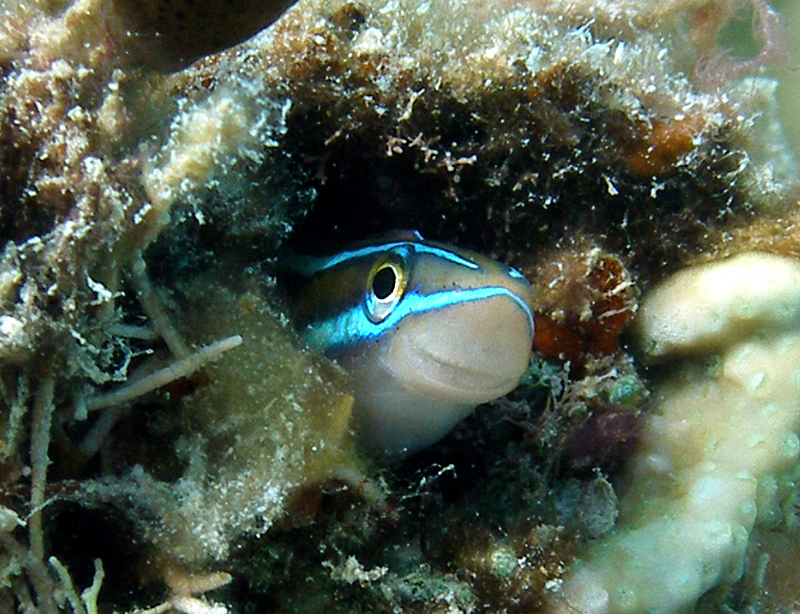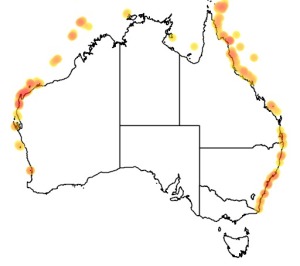Colours
Distinguishing features
A small elongate fish with two neon blue stripes running along the body. The background colour is generally black around Lizard Island, but orange variants may be seen occasionally.
Size
- Up to 12 cm (Standard length)
Depth range
- Depth range data is not yet available.
Synonyms
Similar taxa
-
Animalia:
Common Cleanerfish (species: Labroides dimidiatus)
Plagiotremus rhinorhynchos mimics Labroides dimidiatus so as to get a bite of its victims. When the fang blenny is coloured to mimic the cleaner wrasse, they are most easily distinguished by differencies in their tail and mouth shape.
Distribution
Distribution and habitat preferences
Coral rich areas in lagoons and back reef habitats. The fish usually has a hole in the reef into which it retreats tail first if threatened.
Found in most reef habitats around the island not exposed to heavy wave action.
Behaviour
The Bluestriped Fangblenny is a solitary species which attacks other reef fishes to feed on the mucous, scales and skin tissue it removes with its sharp teeth. It is a facultative mimic of the juvenile Common Cleanerfish, with small fang blennies able to mimic the colour pattern of the juvenile wrasse if they are in close proximity, but they will adopt a different colour pattern if no wrasse are present. Mimicking the cleaner wrasse allows the Fangblenny to approach prey fishes more closely and seems to result in a higher attack success rate.
Web resources
References
References that assist with identification
- Leis, J.M. and B.M. Carson-Ewart (2000). Larvae of Indo-Pacific Coastal Fishes Brill, Leiden, pp. 1-850. LIRS catalog number 660.
Other references
- Bshary, A. and R. Bshary (2012). Individual differences in foraging strategies of parasitic Sabre-Tooth Blennies. PLoS ONE, 7(9): e45998. LIRS catalog number 1554.
- Côté, I.M. and K.L. Cheney (2007). Aggressive mimics profit from a model–signal receiver mutualism, Proceedings of the Royal Society B, 274: 2087-2091. LIRS catalog number 1088.
- View all references





